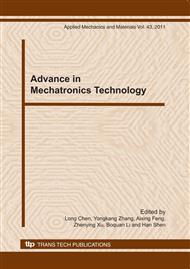p.405
p.409
p.414
p.420
p.424
p.430
p.434
p.438
p.443
Surface Heat Transfer Coefficient’s Calculation of W9Mo3Cr4V during Cryogenic Treatment
Abstract:
In the process of the finite element analogy of the Cryogenic Treatment of the high speed steel cutter with respect to the material of W9Mo3Cr4V, the surface heat transfer coefficient is a crucial parameter. In order to get this parameter, this paper employed the method of inverse heat conduction to process the temperature curve generated through the cryogenic treatment of the tested work piece with the material of W9Mo0Cr4V, thereby obtaining the surface heat transfer coefficient of the tested work piece. This coefficient can be considered the surface heat transfer coefficient of cryogenic treatment of the cutter with the same material. The principle of the inverse heat conduction is as follows: firstly, according to the boundary condition and the initial value in the tri-dimensional space, the equation of the sensitivity coefficient and the temperature field can be deduced. Second, the coupling of two equations is carried out, and the heat flux density is calculated based on above result. The heat flux density will be revise to get the reasonable value . Lastly, the surface heat transfer coefficient can be obtained by the heat flux density. In this paper, all the work is automatically accomplished with the aid of FEPG soft ware and Visual C++ programmable language.
Info:
Periodical:
Pages:
424-429
Citation:
Online since:
December 2010
Authors:
Price:
Сopyright:
© 2011 Trans Tech Publications Ltd. All Rights Reserved
Share:
Citation:


